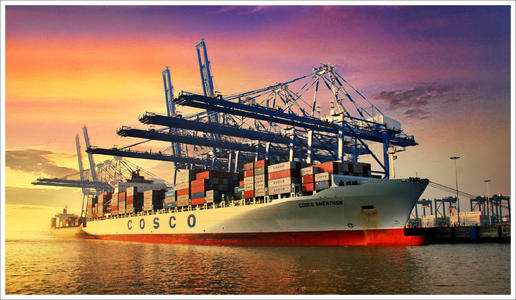
According to data released by the General Administration of Customs on September 8, the total value of China's imports and exports in the first eight months of this year was 20.13 trillion yuan, an increase of 3.6% over the same period last year. Among them, exports were 10.95 trillion yuan, up 6.1%; imports were 9.18 trillion yuan, up 0.8%; trade surplus was 1.77 trillion yuan, an increase of 46%.
How do you view this "transcript"? In terms of total volume, the total value of imports and exports of goods and trade “plates” increased by 3.6%, not particularly large. However, as the growth rate of exports was faster than the growth rate of imports, the trade surplus expanded by 46%, which was very significant. What is the reason? This requires looking at the causes of changes in the internal structure of the “plate”, which involves three dimensions: the first is where to buy and sell, the second is which varieties of trade, and the third is which trade.
From the perspective of trading partners, the world economy continues to deepen its dependence on China. In the first eight months of this year, China’s top three trading partners were the European Union, ASEAN and the United States. China’s exports to them increased by 11.8%, 15.7%, and -3.7%, respectively, and imports increased by 6.7%, 6.9%, and -23.5%, respectively. They expanded by 22.9%, 65.4% and 7.7% respectively. It is worth noting that due to the sharp decline in exports to China, the United States has fallen from the second largest trading partner of China a year ago to the third place and has been surpassed by ASEAN. China's trade surplus with the three major trading partners is growing, indicating that the degree of interdependence between China and the world economy continues to deepen.
From the perspective of trade varieties, China has contributed more to the world's high-end industries. Trade goods can be divided into two major types of raw materials and manufactured goods, and finished products can be divided into high- and low-end according to the position of the industrial chain in which they are located. The structure of trade products can reflect the industrial structure of a country. In the first eight months of this year, the total amount of imports of raw materials, such as iron ore, crude oil and natural gas, increased significantly. Among China's exports, the largest share of mechanical and electrical products, exports in the first eight months increased by 5.6%. At the same time, China's imports of mechanical and electrical products fell by 3.1%. It can be seen that in China's trade structure, raw materials are affected by both import volume and price factors. Total expenditures are growing at a faster rate, while imports of medium and high-end manufactured goods have declined. At the same time, the export of medium and high-end manufactured goods maintained rapid growth, indicating that China's contribution to the mid- to high-end industries continued to rise in the world economic structure.
From the perspective of trade methods, China's position in the global value chain has risen. The two trade methods of general trade and processing trade account for about 85% of China's total trade. Although it is only different types of customs declaration, it reflects “what is the job”: processing trade can be understood as “replacement for people”. General trade can be understood as the sale of independent products. The data shows that in the first eight months of this year, China's import and export of processing trade declined, while general trade exports grew rapidly and imports grew slowly. It shows that the work of “replacement for people” in China's industrial structure is decreasing, and independent products are increasing.
The combination of the above three perspectives can constitute a picture of the changes in the Chinese economy in the world: in the global mid- to high-end industries, “Made in China” is more and more, and the opening of the Chinese market is growing. At the same time, China is also an increasingly important trading partner for developing countries that export raw materials. In the face of the international economic environment in which the risks and uncertainties are rising in the first eight months of this year, the Chinese economy has shown certain resilience. This is an objective portrayal of China's industrial upgrading. Individuals attempting to create a country that is isolated from the Chinese economy are missing the “Chinese train” that runs at high speed.